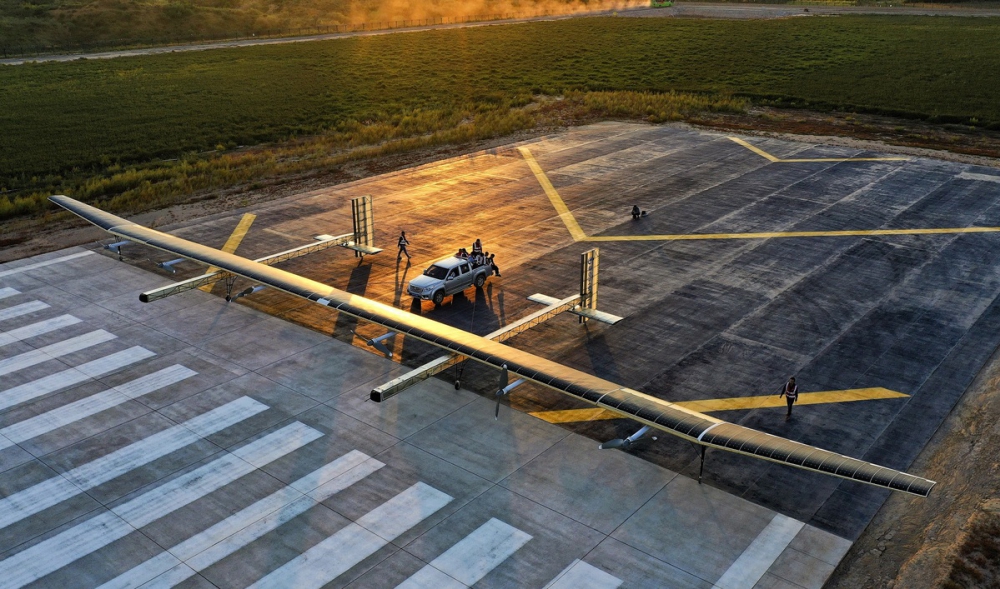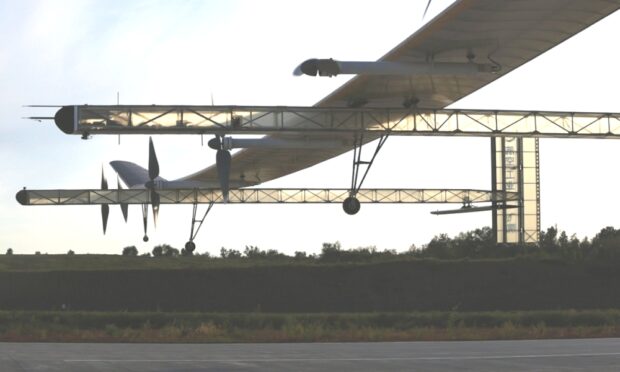China’s near-space solar-powered large unmanned aerial vehicle has recently carried out its maiden flight successfully, with analysts saying on Sunday that the drone can assume the role of a satellite for reconnaissance, monitoring, surveying and communications relay missions when satellite services are not immediately available in emergencies.
The Qimingxing-50, or Morning Star-50, China’s first large drone with solar energy as the only power source, successfully made its maiden flight on Saturday, the Global Times learned from its developer, the Aviation Industry Corporation of China (AVIC).
According to AVIC, the large solar-powered drone took off in Yulin, Northwest China’s Shaanxi Province on Saturday, and landed smoothly after 26 minutes airborne, successfully completing its maiden flight with all systems operating normally.
The Qimingxing-50 is the first high-altitude low-speed drone with an ultrahigh aspect ratio developed by the Chinese aviation industry, the first large drone to use a twin-fuselage configuration, and also the first all-electric large unmanned aerial vehicle platform with solar energy as the only power source. Using efficient, clean, and green solar energy, it can stay in the air for a long time to perform high-altitude reconnaissance, forest fire monitoring, atmospheric environment monitoring, geographic mapping, communications relay and other tasks, AVIC said.

Qimingxing 50, or Morning Star 50, drone flying in the air in Yulin, Shaanxi province, on Sept 3, 2022. Photo: Liu Feng/chinadaily.com.cn
Thanks to its capability to conduct very long endurance flights in near space, the Qimingxing-50 drone can essentially become a substitute for satellites, a Chinese aerospace expert told the Global Times on Sunday, requesting anonymity.
Satellite services are not always available due to the limited numbers of satellites and relatively fixed schedules of overhead passes. For time-sensitive missions, near-space drones can offset those disadvantages, the expert said, noting that satellite services could also get sabotaged in wartime, so near-space drones can replace them in that scenario.
An aerial drone is also cheaper than a satellite, the expert said.
The Chinese People’s Liberation Army Air Force has already publicly displayed the WZ-7 high-altitude reconnaissance drone capable of near-space flight at high speed but with short endurance. The Qimingxing-50’s long endurance and low speed characteristics could be a good complementation, observers said.
The successful maiden flight of the Qimingxing-50 lays a solid foundation for the development and type establishment of large solar-powered unmanned aerial vehicles in China’s aviation industry, which will further promote the development of key technologies in the country’s new energy field, composite material field and flight control field, and enhance China’s ability to perform tasks in near space and over far oceans and seas, according to AVIC.
The Chinese aviation industry will seize the opportunity to increase investment in innovative research and development, accelerating the development of large solar-powered unmanned aircraft, as well as continue to lead the development of independent innovation in related industries, AVIC said.
Top Photo: Qimingxing 50, or Morning Star 50, drone flying in the air in Yulin, Shaanxi province, on Sept 3, 2022. [ Liu Feng/chinadaily.com.cn]
Source: Global Times

